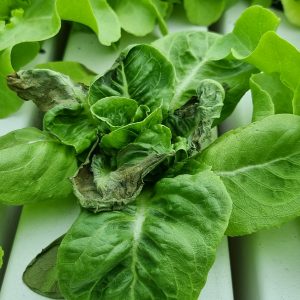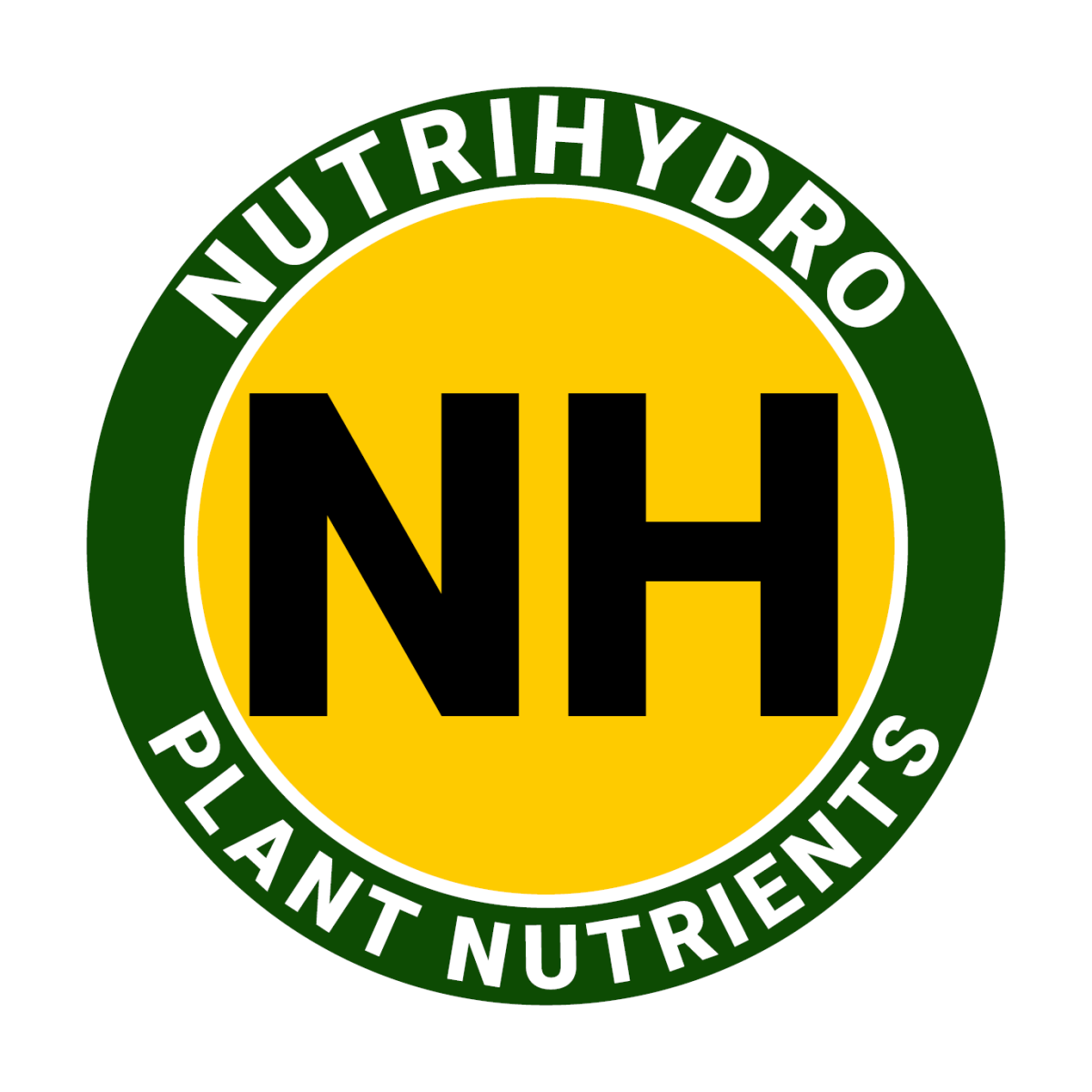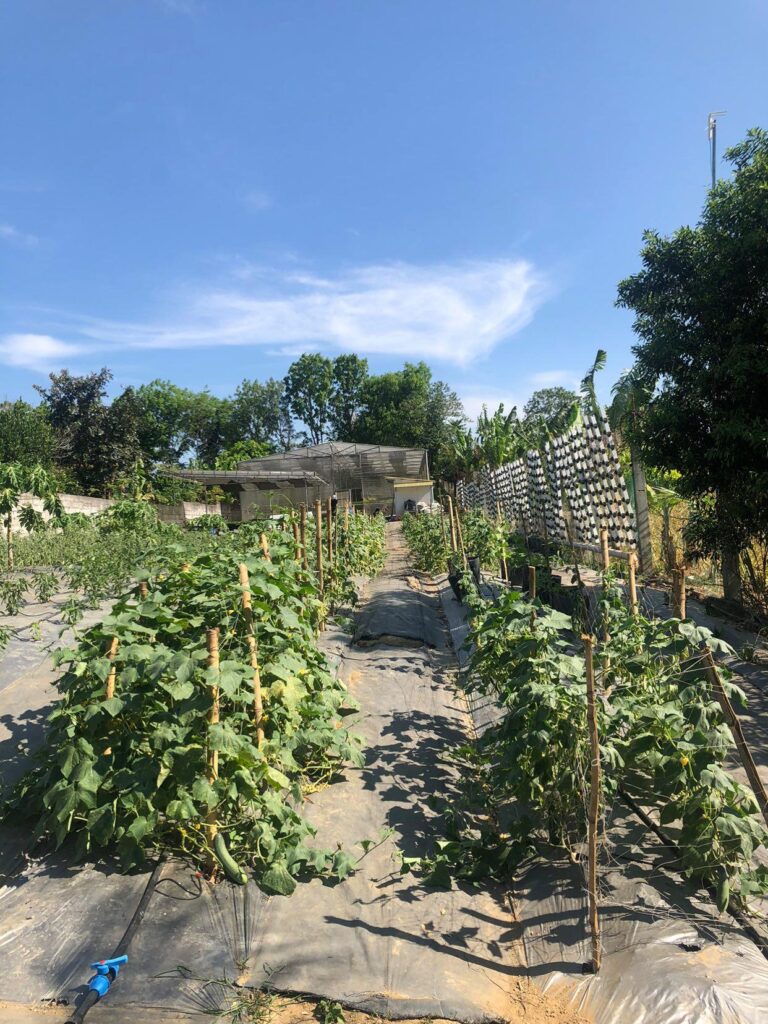Understanding and Managing Tip Burns in Hydroponic Lettuce Cultivation

Tip burn is a common disorder often encountered in lettuce cultivation, particularly in hydroponic systems. It is characterized by the marginal necrosis of young leaves, typically starting at the leaf tips or margins and advancing towards the leaf base. Hydroponic systems enable rapid plant growth, but this advantage also raises the risk of tip burn, as the plant’s growth can outpace its calcium uptake, leading to a deficiency. This condition can significantly impact the yield and quality of the crop.
Calcium and Its Role as an Immobile Nutrient
Calcium is a vital nutrient for plant growth and development, and it plays a significant role in cell wall structure and stability, cell division, and the functioning of cell membranes. It also serves as a signaling ion that helps regulate plant responses to various environmental cues.
However, calcium is classified as an “immobile” nutrient in plants. This immobility means that once calcium is deposited within plant tissue, it cannot be relocated to other areas of the plant. Hence, if a plant experiences a deficiency in calcium supply, new growth areas like young leaves or rapidly expanding fruits that require a continuous calcium supply are the first to exhibit deficiency symptoms. In the context of lettuce, this condition is manifested as tip burn.
Susceptible Varieties of Lettuce
While all lettuce varieties can be susceptible to tip burn to some degree, certain varieties are more prone due to their growth characteristics. Varieties that grow rapidly and have a high transpiration rate are particularly vulnerable, as they are likely to experience a larger gap between their growth rate and calcium uptake rate. Butterhead, romaine, and certain loose-leaf varieties are frequently reported to have higher susceptibility to tip burn.
Symptoms of Tip Burn
The initial symptom of tip burn in lettuce is the browning or necrosis of leaf tips. Over time, these brown areas may enlarge and become sunken, dry, and papery. In severe cases, the affected tissue may die off entirely. The condition typically first appears on the inner, younger leaves since they are the fastest-growing tissues and have a higher demand for calcium.
Causes of Tip Burn
Tip burn primarily occurs due to a localized deficiency of calcium in the plant. This can be a result of several factors:
Inadequate Calcium Supply: This can occur if the hydroponic nutrient solution is not properly balanced or lacks sufficient calcium.
High Transpiration Rate: Fast-growing lettuce varieties can have high transpiration rates, causing a rapid uptake of water that dilutes the nutrient concentration in the plant tissue.
Poor Transport of Calcium: Calcium is transported through the plant with the transpiration stream. Conditions that reduce transpiration, like high humidity, can limit the calcium transport to the rapidly growing leaf tips.
Rapid Growth: Hydroponically grown lettuce can grow very rapidly, and sometimes this growth can outpace the plant’s ability to take up and distribute calcium.
Treatment of Tip Burn
Treating tip burn mainly involves adjusting the conditions in the hydroponic system:
Balancing Nutrient Solution: The nutrient solution should be carefully balanced to ensure that it provides all the necessary nutrients in the correct proportions. A calcium supplement, like NutriHydro Bio CalMag, can be added if needed.
Modifying Environmental Conditions: Conditions such as humidity, temperature, and light intensity can be adjusted to optimize transpiration and thus improve calcium transport within the plant.
Management and Prevention of Tip Burn
Long-term management and prevention of tip burn in hydroponic lettuce cultivation involves regular monitoring and adjustments to ensure optimal growing conditions:
Regular Monitoring: Regularly check plants for early signs of tip burn and test the nutrient solution to ensure it is correctly balanced.
Use of Resistant Varieties: Where possible, choose lettuce varieties that are less prone to tip burn.
Environmental Control: Manage environmental conditions to maintain an optimal balance between plant growth rate and calcium uptake.
Using NutriHydro Bio CalMag and the Importance of Biostimulants
NutriHydro Bio CalMag is a biostimulant that contains alginates, calcium, and magnesium, which are essential nutrients for plant growth. Biostimulants are substances or microorganisms applied to plants or the soil to enhance nutrition efficiency, abiotic stress tolerance, and crop quality traits.
In hydroponic lettuce cultivation, the use of biostimulants like NutriHydro Bio CalMag can help prevent tip burn by supplying additional calcium and facilitating its uptake and transport within the plant. Moreover, the alginates present in the product act as natural chelators, enhancing the bioavailability of calcium and magnesium, and contributing to a healthy and balanced growth of the lettuce.
In summary, tip burn is a common but preventable problem in hydroponic lettuce cultivation. Through careful monitoring, balanced nutrition, environmental control, and the use of effective biostimulants, growers can effectively manage and prevent this disorder, ensuring a high-quality and productive lettuce crop.
Author

Cristina Ramirez - Padua ABE

Cristina Ramirez - Padua ABE
NutriHydro is a manufacturer of plant nutrients based in the Philippines. They are known to grow the healthiest, heaviest, and largest lettuce in the country. NutriHydro products are available to purchase from the following e-commerce platforms.
Lazada: bit.ly/3asMYXN
Shopee: bit.ly/3nRJX6Z
Basilyard: bit.ly/346Kklw
NutriHdyro Website: bit.ly/434MoY6





